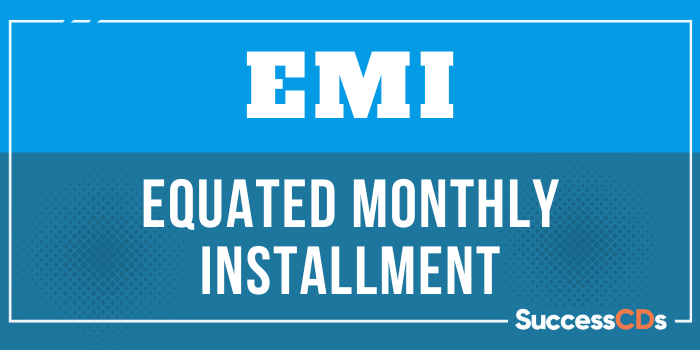
EMI Full Form
The Full form of EMI is Equated Monthly Installment. EMI is a fixed amount payable by a borrower to a moneylender at a specific date of each month for a specific period of time. EMI consists of a principal amount and interest amount that a borrower is supposed to pay to lender over a specific number of years to pay off the loan in full. So, it is an unequal combination of principal and interest rate. The calculation of an EMI depends on three factors which are Interest rate, Loan amount and Tenure of the Loan. Interest Rate is the rate of interest charged by the moneylender, e.g. Bank, where Loan Amount is the amount borrowed or also called Principal amount and tenure of the loan is the time provided by the lender to repay the entire loan including the interest. The main advantages of EMI are that it gives you the power to buy beyond your monetary reach by allowing you to pay in instalments, there is no middleman, so you directly pay the EMI to the lender without the hassle of contacting a middleman and it does not hurt your savings as you are required to pay minimum regular payments instead of a lump sum amount.
EMI is a popular way of repaying loans because it makes it easier for the borrower to manage their debt, by breaking the cost of the loan into smaller, more manageable payments. It allows the borrower to plan and budget accordingly, as the EMI amount remains the same each month.
EMI calculation is based on the principal amount borrowed, the interest rate, and the loan term (the number of months over which the loan will be repaid).
EMIs are commonly used for repaying car loans, home loans, personal loans, and other types of consumer debt. Banks and other financial institutions often use EMI as a way to attract borrowers, since it makes it easier to afford a loan and helps to manage budget.
How is EMI Calculated?
EMI can be calculated using various methods, such as the Flat Interest rate Method or the Reducing Balance Method.
Related Post: